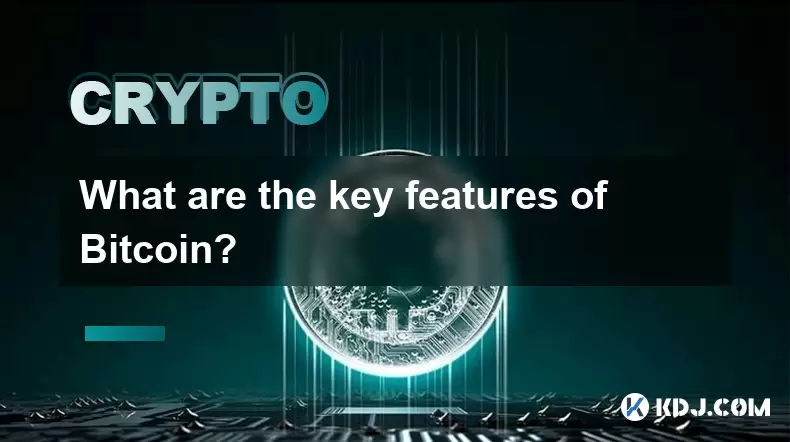-
 bitcoin
bitcoin $122659.385674 USD
0.52% -
 ethereum
ethereum $4484.113342 USD
-0.09% -
 bnb
bnb $1304.229256 USD
-0.85% -
 tether
tether $1.000204 USD
-0.03% -
 xrp
xrp $2.860636 USD
-0.51% -
 solana
solana $227.288799 USD
2.36% -
 usd-coin
usd-coin $0.999805 USD
0.01% -
 dogecoin
dogecoin $0.252837 USD
1.18% -
 tron
tron $0.341149 USD
1.12% -
 cardano
cardano $0.830507 USD
0.33% -
 hyperliquid
hyperliquid $45.792319 USD
0.04% -
 chainlink
chainlink $22.422164 USD
1.55% -
 ethena-usde
ethena-usde $1.000283 USD
0.01% -
 sui
sui $3.511389 USD
0.83% -
 stellar
stellar $0.385276 USD
-0.44%
How to send Bitcoin?
Sending Bitcoin involves obtaining a wallet, funding it, locating the recipient's address, creating a transaction with an appropriate fee, confirming the transaction, and tracking its confirmation status.
Sep 27, 2024 at 05:06 pm

A Comprehensive Guide to Sending Bitcoin
Bitcoin, the decentralized digital currency, has gained immense popularity as a mode of secure and convenient online transactions. Sending Bitcoin is a straightforward process that can be completed in a few simple steps.
1. Obtain a Bitcoin Wallet:The first step in sending Bitcoin is to set up a Bitcoin wallet. This wallet will store your Bitcoin and allow you to manage your transactions. There are numerous Bitcoin wallets available, both software wallets and hardware wallets. Choose one that aligns with your security and usability needs.
2. Fund Your Wallet:Once you have a Bitcoin wallet, you need to fund it with Bitcoin. You can purchase Bitcoin from cryptocurrency exchanges or through peer-to-peer exchanges. Once purchased, send the Bitcoin to your wallet's unique address.
3. Locate Recipient's Address:Before initiating the transaction, ensure you have the recipient's Bitcoin address. This address is typically a long string of characters that represents their unique location on the Bitcoin network.
4. Create a Transaction:In your Bitcoin wallet, create a new transaction by entering the recipient's Bitcoin address and the amount of Bitcoin you wish to send.
5. Set Transaction Fee:Bitcoin transactions involve a small fee that incentivizes miners to process them. The fee depends on several factors, including the speed of confirmation and the network traffic. Choose an appropriate fee based on your transaction requirements.
6. Send Transaction:Review the transaction details carefully and confirm the transaction. Your Bitcoin wallet will send the transaction to the Bitcoin network, and it will be processed by miners.
7. Confirm the Transaction:Once the transaction is confirmed by the miners, it will be added to the Bitcoin blockchain. You can track the confirmation status of your transaction on blockchain explorers like Blockchair or Blockchain.com.
Additional Tips:- Double-check the recipient's address before sending Bitcoin to avoid incorrect transactions.
- Consider using two-factor authentication for your Bitcoin wallet to enhance security.
- Be aware of potential scams and phishing attempts related to Bitcoin transactions.
- Store your private keys or recovery phrases securely to prevent unauthorized access to your funds.
Disclaimer:info@kdj.com
The information provided is not trading advice. kdj.com does not assume any responsibility for any investments made based on the information provided in this article. Cryptocurrencies are highly volatile and it is highly recommended that you invest with caution after thorough research!
If you believe that the content used on this website infringes your copyright, please contact us immediately (info@kdj.com) and we will delete it promptly.
- Unearthing Altcoin Gems: Undervalued Opportunities in 2025
- 2025-10-09 16:05:12
- XRP Transfer, Altcoin Rally, and Crypto Movement: What's Shakin' in the Crypto Space?
- 2025-10-09 15:05:12
- BNB Chain Memecoin Goldmine: Hype or Sustainable Growth?
- 2025-10-09 15:05:12
- XRP, ASTER Surge, and Crypto Presales: What's the Haps?
- 2025-10-09 15:10:01
- XRP Treasuries Soar as Reliance Global Joins the Party: A New Era for Corporate Reserves?
- 2025-10-09 15:10:01
- Pi Network's DeFi Ambitions: DEX, Ecosystem, and What's Next
- 2025-10-09 15:45:16
Related knowledge

Why is Bitcoin considered a revolutionary technology?
Aug 12,2025 at 08:29pm
Decentralization and the Elimination of Central AuthoritiesThe core innovation behind Bitcoin lies in its decentralized architecture, which fundamenta...

Why is Bitcoin considered a revolutionary technology?
Aug 10,2025 at 07:42pm
Decentralized Architecture and Trustless TransactionsBitcoin is considered revolutionary because it introduced a decentralized architecture that opera...

What are the key features of Bitcoin?
Aug 10,2025 at 02:50am
Decentralization and Peer-to-Peer NetworkOne of the most defining characteristics of Bitcoin is its decentralized nature. Unlike traditional financial...

Can the Bitcoin protocol be changed?
Aug 07,2025 at 01:16pm
Understanding the Bitcoin ProtocolThe Bitcoin protocol is the foundational set of rules that govern how the Bitcoin network operates. It defines every...

Can the Bitcoin protocol be changed?
Aug 11,2025 at 01:01am
Understanding the Bitcoin Protocol StructureThe Bitcoin protocol is the foundational set of rules that govern how the Bitcoin network operates. These ...

What happens to Bitcoin transactions once they are confirmed?
Aug 09,2025 at 05:22am
Understanding Bitcoin Transaction ConfirmationWhen a Bitcoin transaction is initiated, it is broadcast to the network and placed in a pool of unconfir...

Why is Bitcoin considered a revolutionary technology?
Aug 12,2025 at 08:29pm
Decentralization and the Elimination of Central AuthoritiesThe core innovation behind Bitcoin lies in its decentralized architecture, which fundamenta...

Why is Bitcoin considered a revolutionary technology?
Aug 10,2025 at 07:42pm
Decentralized Architecture and Trustless TransactionsBitcoin is considered revolutionary because it introduced a decentralized architecture that opera...

What are the key features of Bitcoin?
Aug 10,2025 at 02:50am
Decentralization and Peer-to-Peer NetworkOne of the most defining characteristics of Bitcoin is its decentralized nature. Unlike traditional financial...

Can the Bitcoin protocol be changed?
Aug 07,2025 at 01:16pm
Understanding the Bitcoin ProtocolThe Bitcoin protocol is the foundational set of rules that govern how the Bitcoin network operates. It defines every...

Can the Bitcoin protocol be changed?
Aug 11,2025 at 01:01am
Understanding the Bitcoin Protocol StructureThe Bitcoin protocol is the foundational set of rules that govern how the Bitcoin network operates. These ...

What happens to Bitcoin transactions once they are confirmed?
Aug 09,2025 at 05:22am
Understanding Bitcoin Transaction ConfirmationWhen a Bitcoin transaction is initiated, it is broadcast to the network and placed in a pool of unconfir...
See all articles










































































